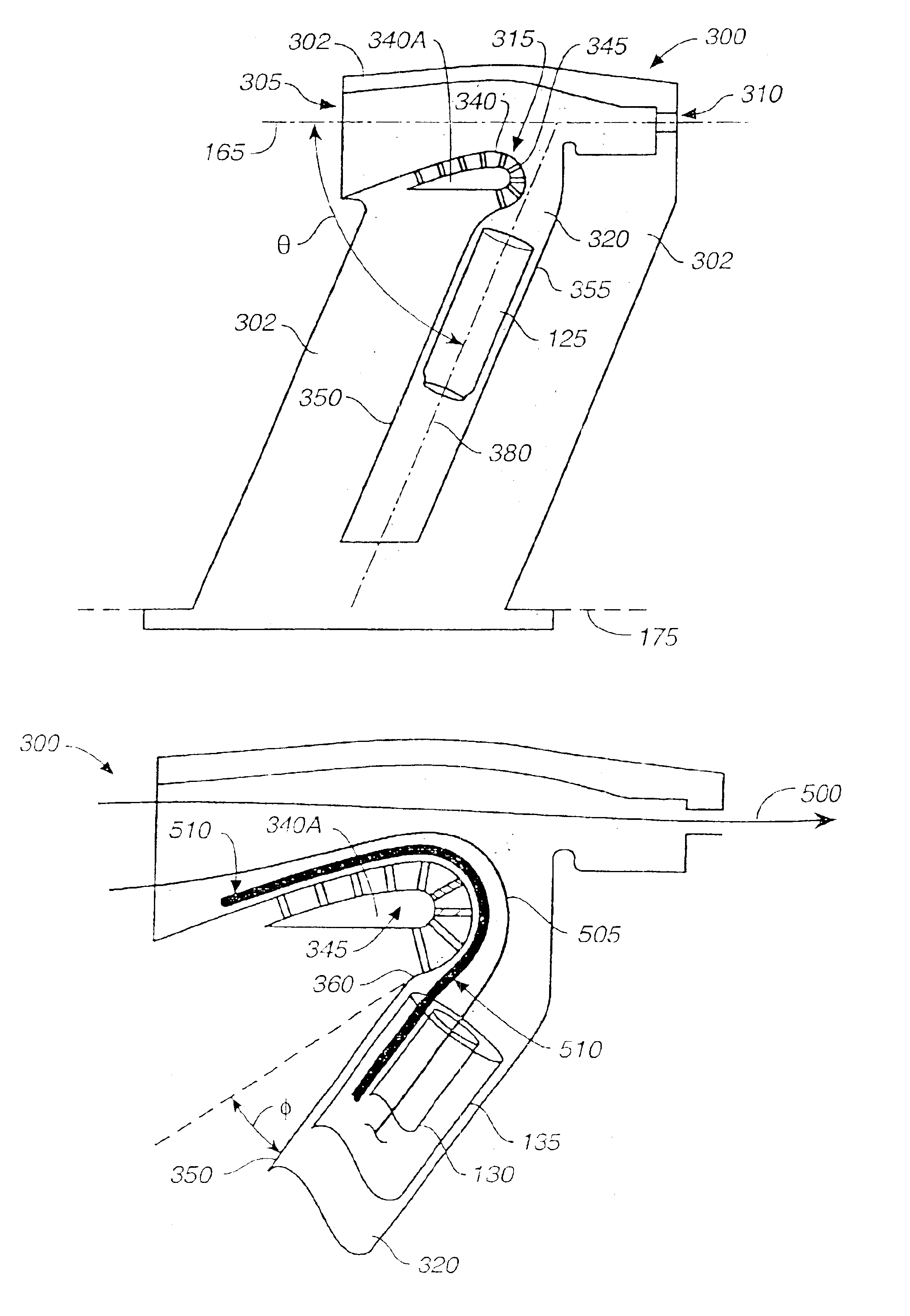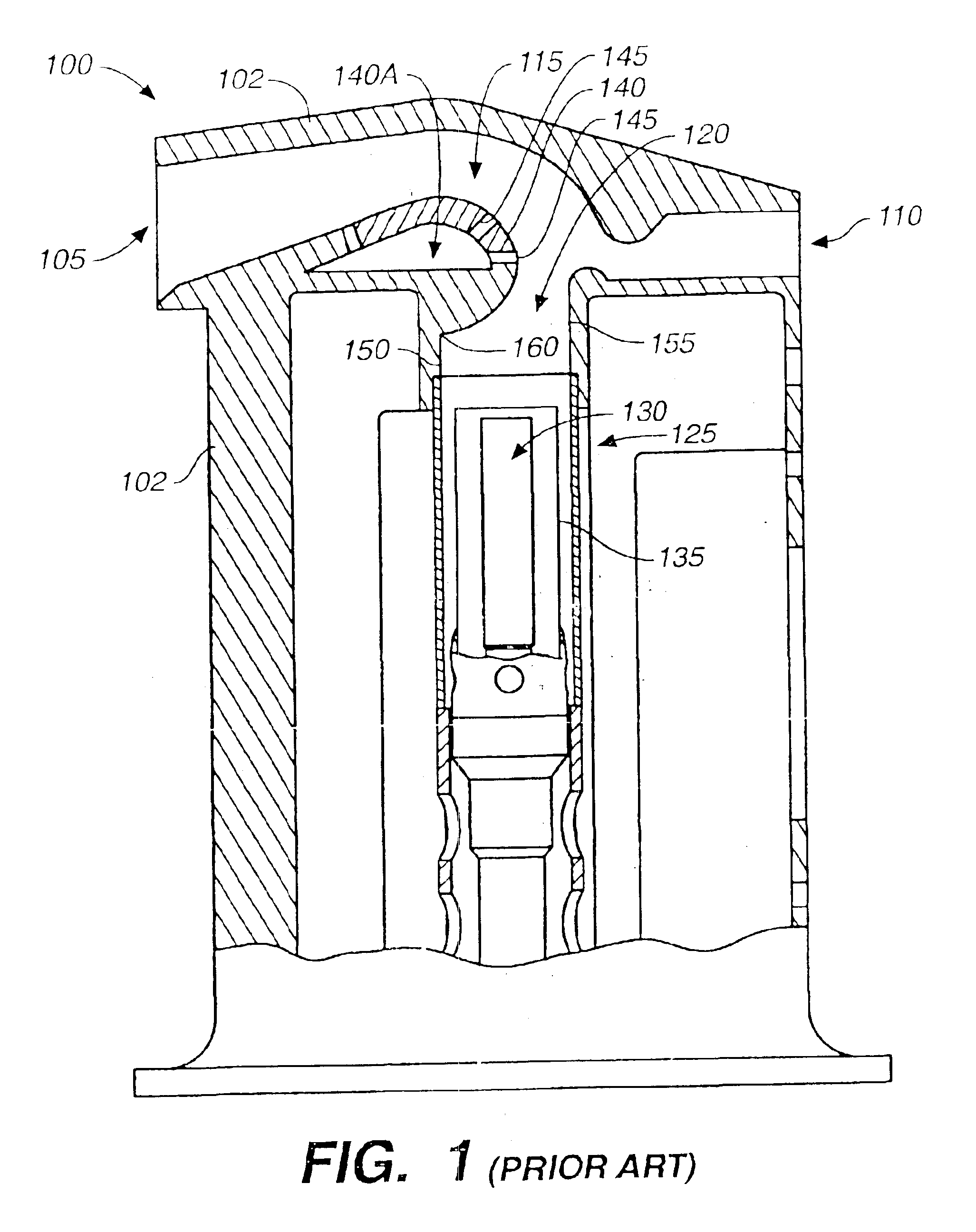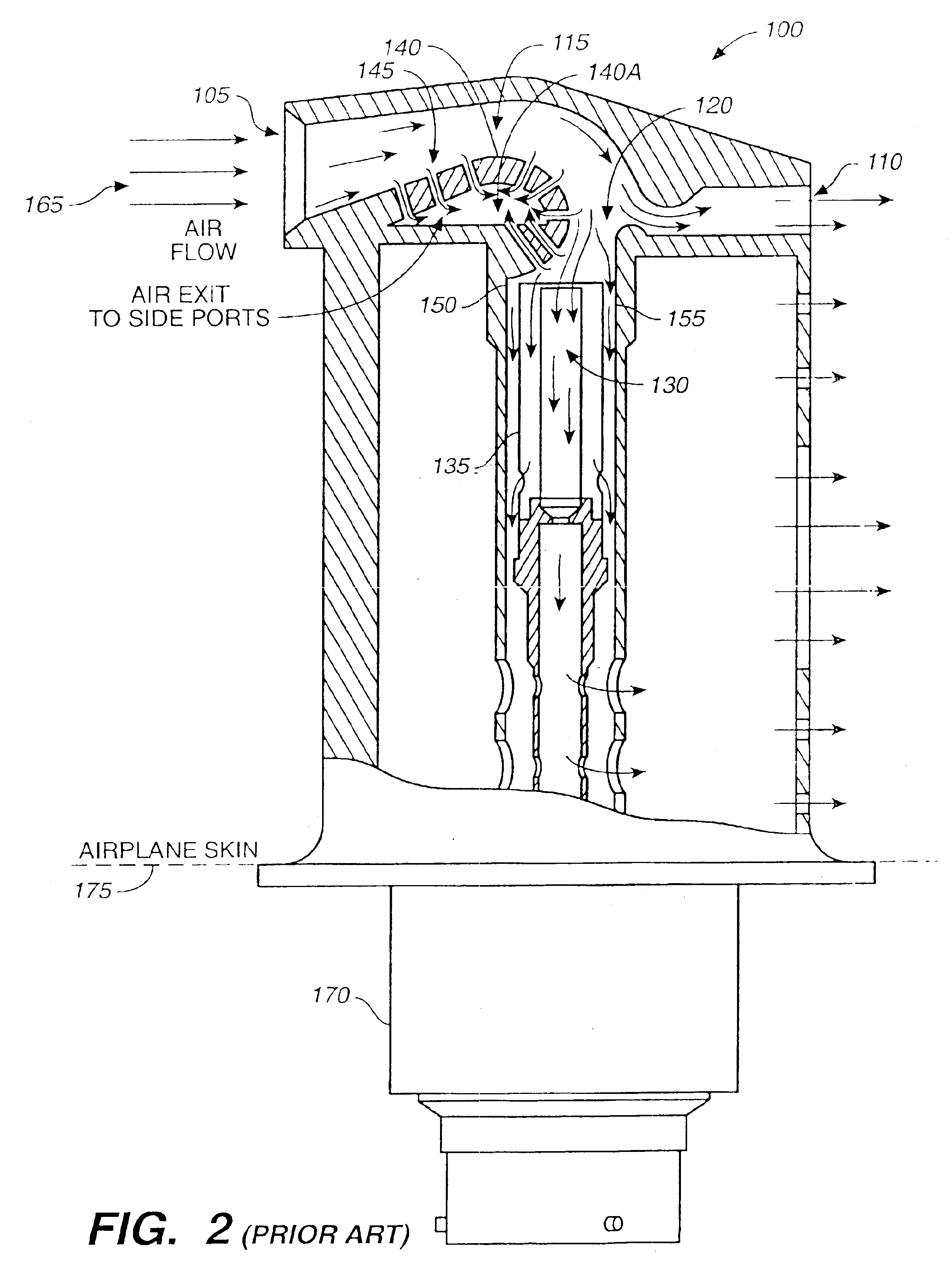Total air temperature probe providing improved anti-icing performance and reduced deicing heater error
a technology of total air temperature and probe, which is applied in the field of total air temperature (tat) probes or sensors, can solve the problems of icing conditions, tat reading error, and conventional tat probes, and achieve the effects of reducing deicing heater error, reducing dhe, and improving inertial extraction of i
- Summary
- Abstract
- Description
- Claims
- Application Information
AI Technical Summary
Benefits of technology
Problems solved by technology
Method used
Image
Examples
Embodiment Construction
FIG. 1 is a diagrammatic illustration of a conventional total air temperature (TAT) probe 100, with portions shown in section. TAT probe or sensor 100 includes housing or walls 102 which form a primary inlet or inlet scoop 105 and a main exit channel 110 through which air from the free stream airflow (outside the probe) passes through. Also formed within housing 102 is a flow separation bend 115 which diverts a portion of the airflow between inlet scoop 105 and main exit channel 110 and redirects this portion into TAT sensor flow passage 120. Positioned within sensor flow passage 120 is sensor assembly 125 that includes a sensing element 130 which senses the TAT, and a radiation shield 135 positioned annularly around sensing element 130.
Flow separation bend 115 includes an inner elbow wall 140 which serves to redirect a portion of the airflow into sensor flow passage 120. Contained within inner elbow wall 140 are bleed holes or ports 145, which are maintained at a pressure different...
PUM
 Login to View More
Login to View More Abstract
Description
Claims
Application Information
 Login to View More
Login to View More - R&D
- Intellectual Property
- Life Sciences
- Materials
- Tech Scout
- Unparalleled Data Quality
- Higher Quality Content
- 60% Fewer Hallucinations
Browse by: Latest US Patents, China's latest patents, Technical Efficacy Thesaurus, Application Domain, Technology Topic, Popular Technical Reports.
© 2025 PatSnap. All rights reserved.Legal|Privacy policy|Modern Slavery Act Transparency Statement|Sitemap|About US| Contact US: help@patsnap.com



